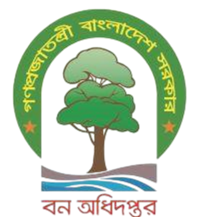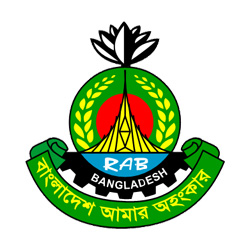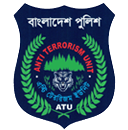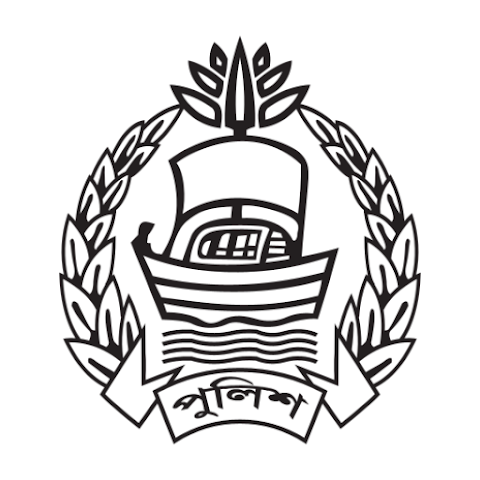বাঘ সংরক্ষণে ঢাকা ঘোষনা
Dhaka Recommendations on Advancing Implementation of
the Global Tiger Recovery Program
Dhaka, Bangladesh. September 16, 2014
Senior Officials and Experts of the 13 Tiger Range Countries[1] (TRCs) and partner organizations, development partners, and donors met from September 14 to 16, 2014, in Dhaka, Bangladesh, at the 2nd Stocktaking Conference to Review Implementation of the Global Tiger Recovery Program (GTRP). The GTRP is the road map endorsed by TRC leaders in 2010 at the International Tiger Forum in St. Petersburg, Russian Federation, to achieve the goal of the St. Petersburg Declaration on Tiger Conservation: double the number of wild tigers globally by 2022.
Building on the pledges of the St. Petersburg Declaration, the Thimphu Affirmative Nine-Point Action Agenda, which emerged from the 2nd Asian Ministerial Conference on Tiger Conservation, held in Bhutan in October 2012, outlines areas to be targeted for intensified efforts by the TRCs and partners.
In taking stock of the GTRP Implementation Plan 2013-14 based on the Thimphu Agenda, conference participants agreed that significant progress has been achieved in meeting the goals of the Thimphu Agenda and in addressing the wild tiger’s decline toward extinction. Notable achievements include adopting new legislation and policies, creating new protected areas, growing transboundary collaboration, building capacity of frontline staff, and reaching out for the participation of the private sector; however, some areas of continued concern remain. Participants therefore recommend the following actions to advance implementation within the timelines of the Thimphu Agenda:
1. To strengthen FRONTLINES: Continue to increase investment in frontline staff remuneration, benefits (inter alia, risk allowances, rations, and improved quality of life), recognition, skills development, and field equipment and tools, including communications and transportation. Continue to professionalize their service through increased use of technology-based patrolling in protected areas and other tiger habitats. Maintain robust patrolling databases and improve intelligence-led enforcement.
2. To conserve HABITAT: Map and secure tiger habitat (protected areas, buffer zones, corridors, and other units) and land uses in tiger landscapes, employing new tools and technology for mapping and monitoring habitat. Assess and maintain functionality of corridors. Regularly assess management effectiveness in tiger protected areas. Convene national- or provincial-level meetings and working groups with relevant development sectors to develop Smart Green Infrastructure (SGI) applications in tiger landscapes threatened by infrastructure.
3. To engage COMMUNITIES: Expand capacity to deal with human-tiger conflict, which may increase with tiger or prey recovery, through national and local conflict-relief funds and publicize these efforts among affected communities. Make communities partners in conservation.
4. To enhance COLLABORATION: Actively engage with neighboring TRCs in transboundary landscape management. Actively improve international intelligence sharing, through existing channels, leading to enforcement operations including those in hot spots of illegal tiger trade. Actively promote multi-agency and multi-country collaborations through organizations such as SAWEN and ASEAN WEN. Make use of the valuable ICCWC Wildlife and Forest Crime Analytic Toolkit, which was successfully piloted in two TRCs.
5. To launch RESTORATION: TRCs and partners with the expertise commit to support ongoing plans of Kazakhstan, Cambodia, and China and encourage other countries and sites with low tiger densities to advance feasibility planning for restoration.
6. To increase the FLOW OF FUNDS: Continue to seek increasing governmental budgets for tiger conservation. Request development partners and donors to devote attention to the TRCs and themes that are underfunded. Establish or enhance national systems for tracking utilization of financial resources for tiger conservation. Identify points of entry to access funding sources related to climate change adaptation and to smart green infrastructure for the GTRP.
7. To develop new partnerships with BUSINESS AND INDUSTRY: Take advantage of the Confederation of Indian Industry’s (CII) offer to support and facilitate TRCs interested in industry engagement and seek other opportunities to leverage private-sector support.
8. To build comprehensive AWARENESS and reduce illicit demand: Conduct targeted and well-researched and designed programs to reduce illicit demand for tiger parts and for prey species. Urgently assist in development of the Global Support Program for demand reduction. To support campaigns to reduce illicit demand, review laws and policies to ensure they contribute to these efforts.
9.a. To MONITOR tigers, prey, and habitat: By 2016, complete science-based national tiger monitoring and assessment to determine tiger population, prey, and habitat status in all tiger habitat. Undertake reserve-specific tiger monitoring using camera traps, DNA analysis ensuring transparency, or other intelligent technologies) to build up national tiger databases.
9.b. To MONITOR GTRP implementation: Continue to improve program implementation and coordination through refinement of Key Performance Indicators, increased capacity to gather and report data, and harmonizing KPIs to the Thimphu Agenda. Develop a more systematic and periodic monitoring and reporting strategy.
These recommendations will form the basis for the GTRP Implementation Plan 2015-2016, which will be presented for endorsement at the 3rd Asian Ministerial Conference on Tiger Conservation.
The TRCs appreciate the commitment of the Government of Bangladesh under the dynamic leadership of the Honorable Prime Minister Sheikh Hasina in tiger conservation. TRCs invite the Honorable Prime Minister to continue her stewardship of the St. Petersburg Declaration.
TRCs acknowledge and appreciate the significant contribution of the World Bank through the GTI to convene the TRCs’ Heads of Governments, Ministers, and Senior Officials and the TRCs’ partner organizations. This led to the development and sustained implementation of the GTRP and National Action Plans to double wild tiger populations globally by 2022, and has greatly elevated the tiger conservation agenda at the national and global levels. TRCs call for clarifying the future role of the GTI within the World Bank and, recognizing the critical importance of maintaining the continuity of high-level government engagement enabled by the World Bank, the TRCs will in a timely manner explore and make recommendations on options for going forward so decisions can be made at the 3rd Ministerial Conference.
By adoption and issuance of the Dhaka Recommendations on Advancing Implementation of the Global Tiger Recovery Program, Senior Officials and Experts of the TRCs express their resolve and conviction that following these recommendations, coupled with continued collective action and political leadership, will move us significantly closer to achieving the goal of doubling the number of wild tigers globally by 2022, and ensuring the integrity of tiger conservation landscapes.
[1] People’s Republic of Bangladesh, Kingdom of Bhutan, Kingdom of Cambodia, People’s Republic of China, Republic of India, Republic of Indonesia, Lao People’s Democratic Republic, Malaysia, Republic of the Union of Myanmar, Nepal, Russian Federation, Royal Thai Government, and Socialist Republic of Vietnam.














